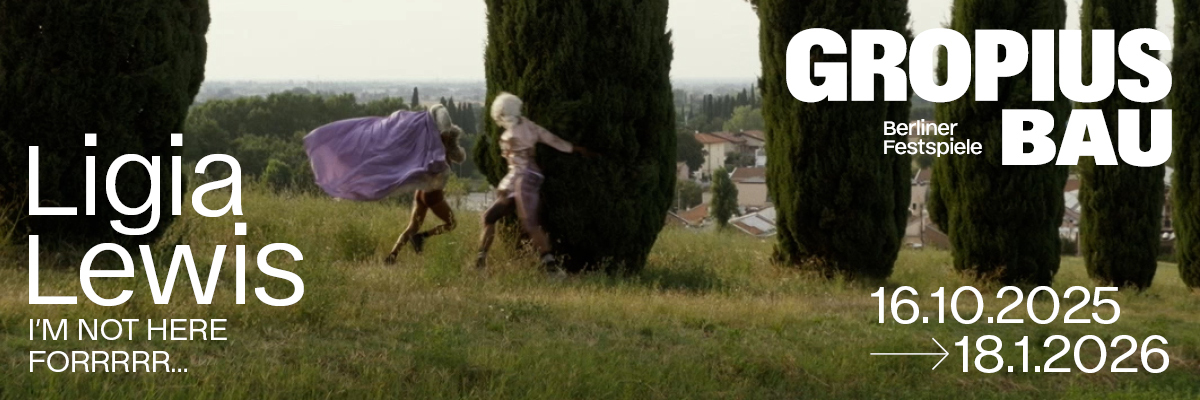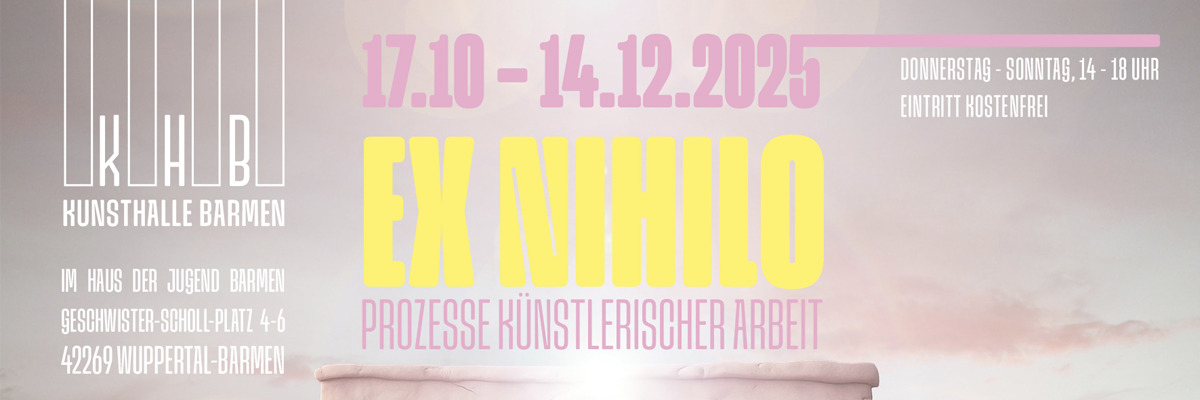
Franca Scholz
Franca Scholz
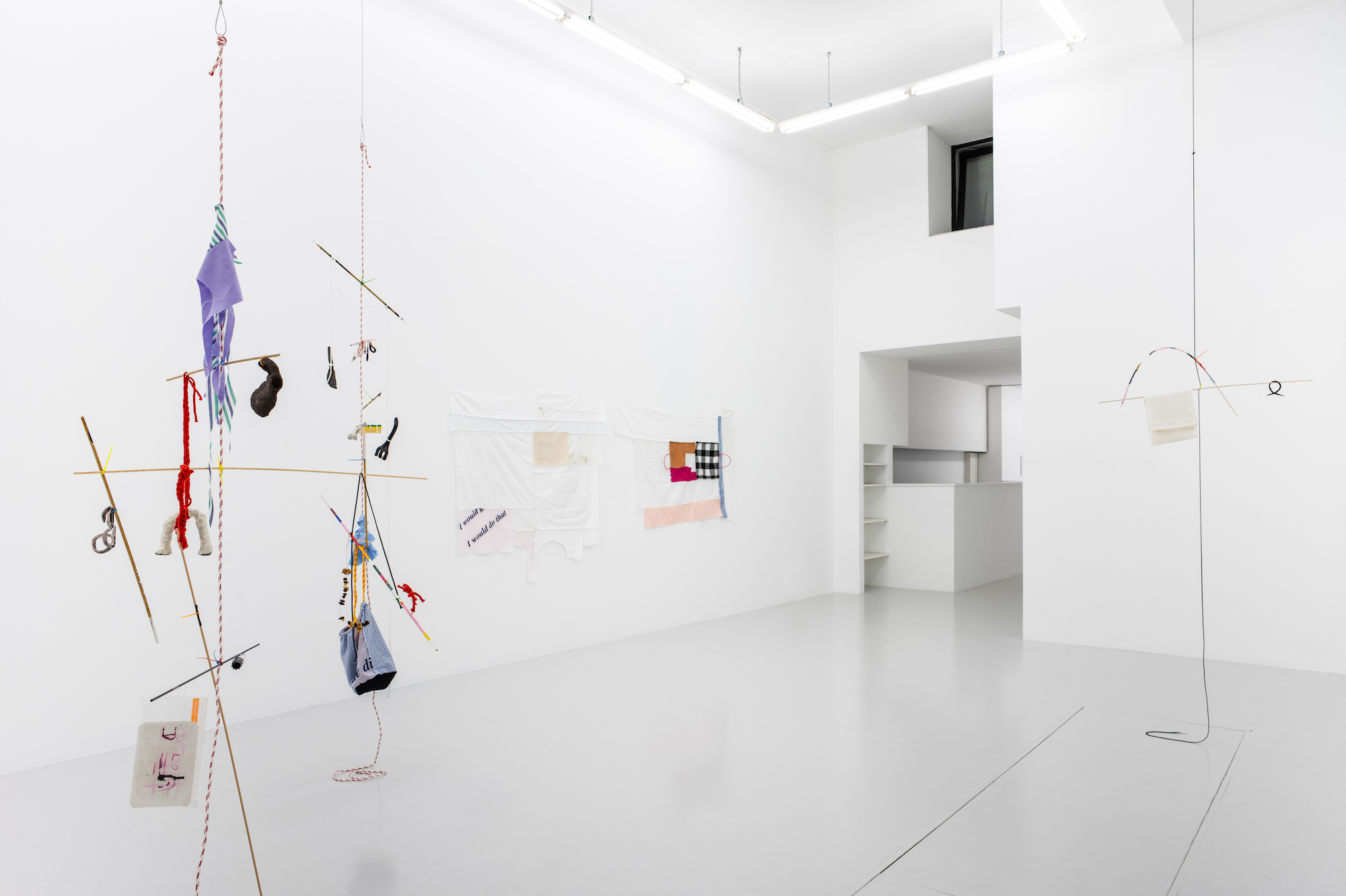
Advertisement
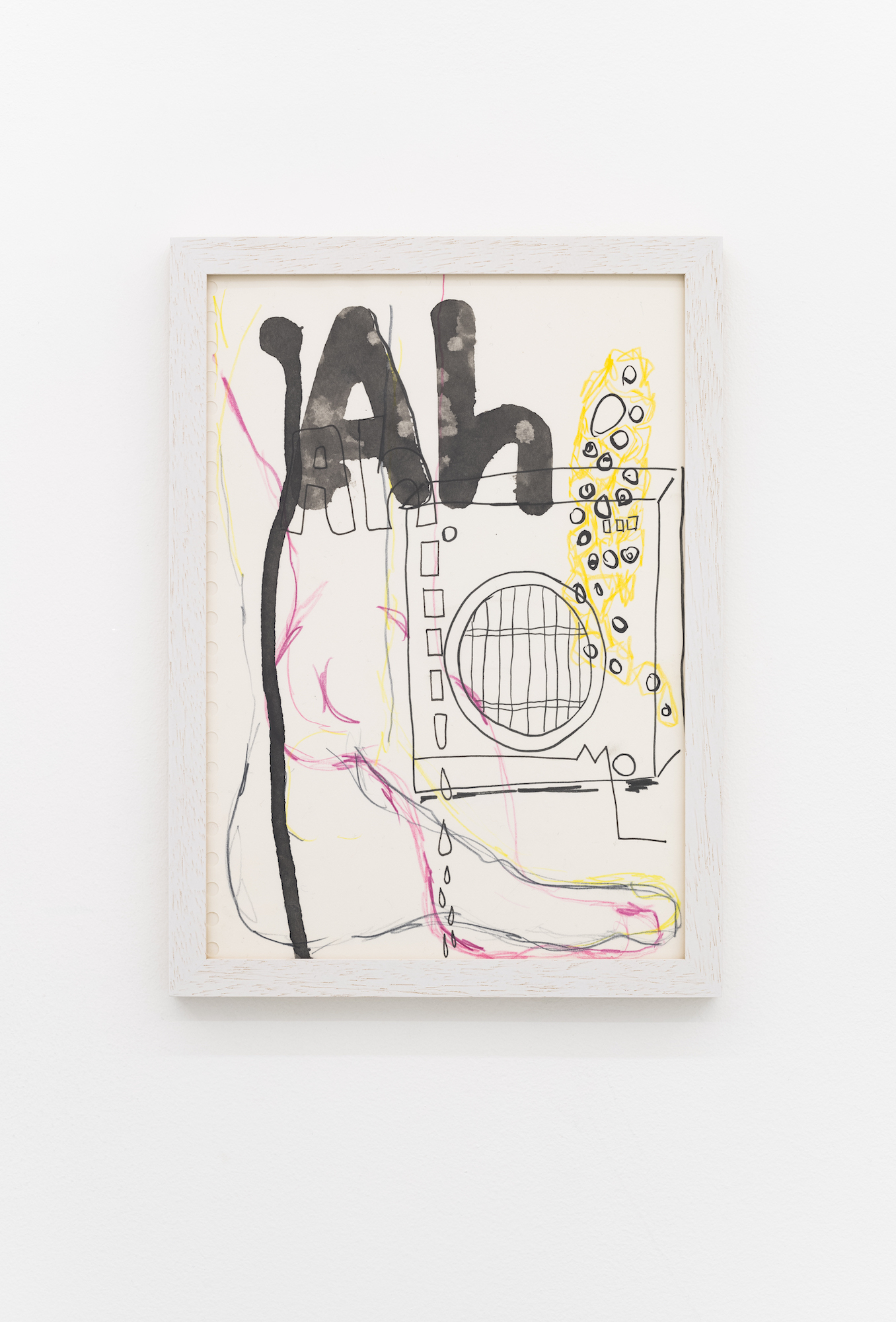
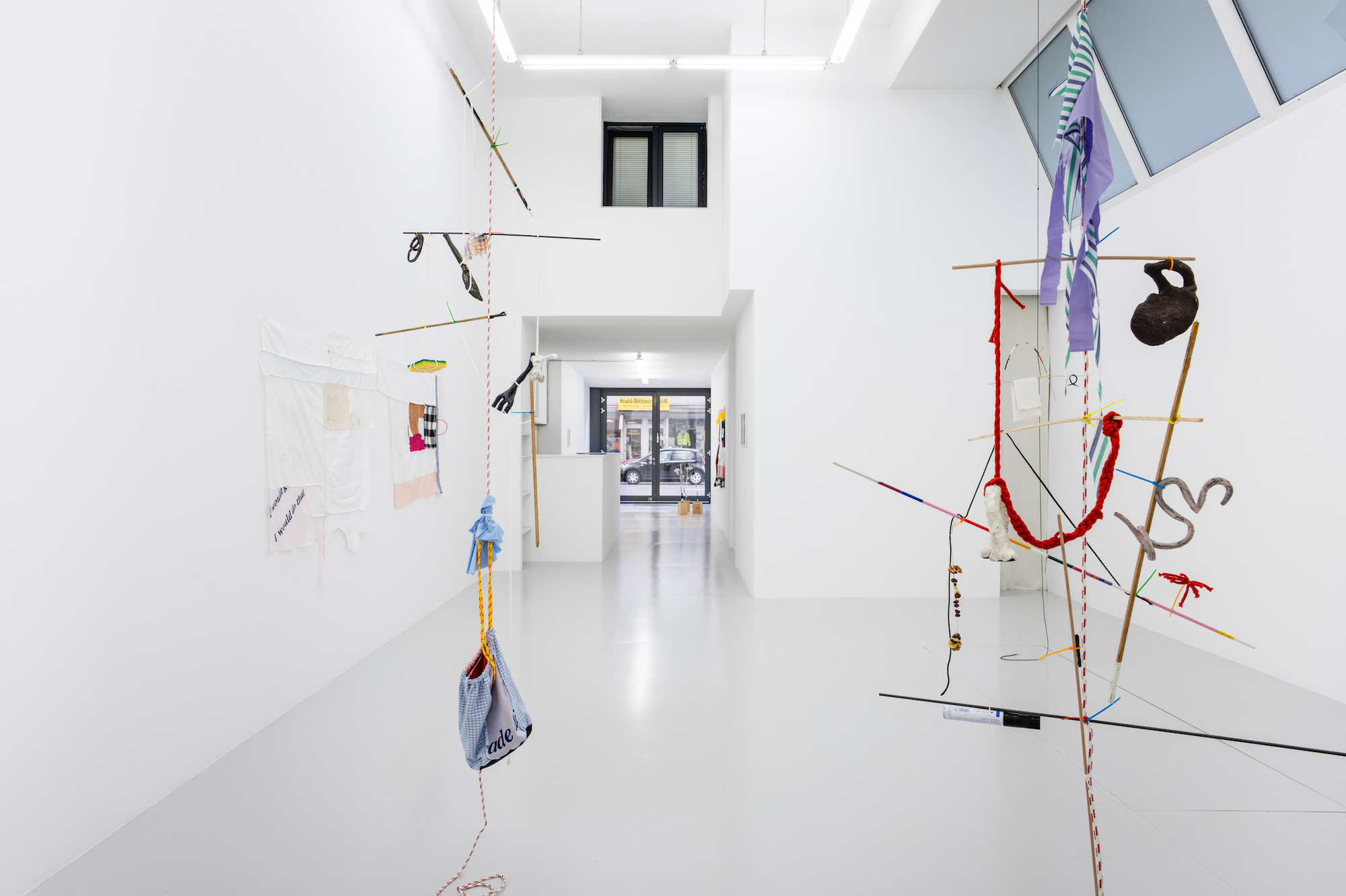
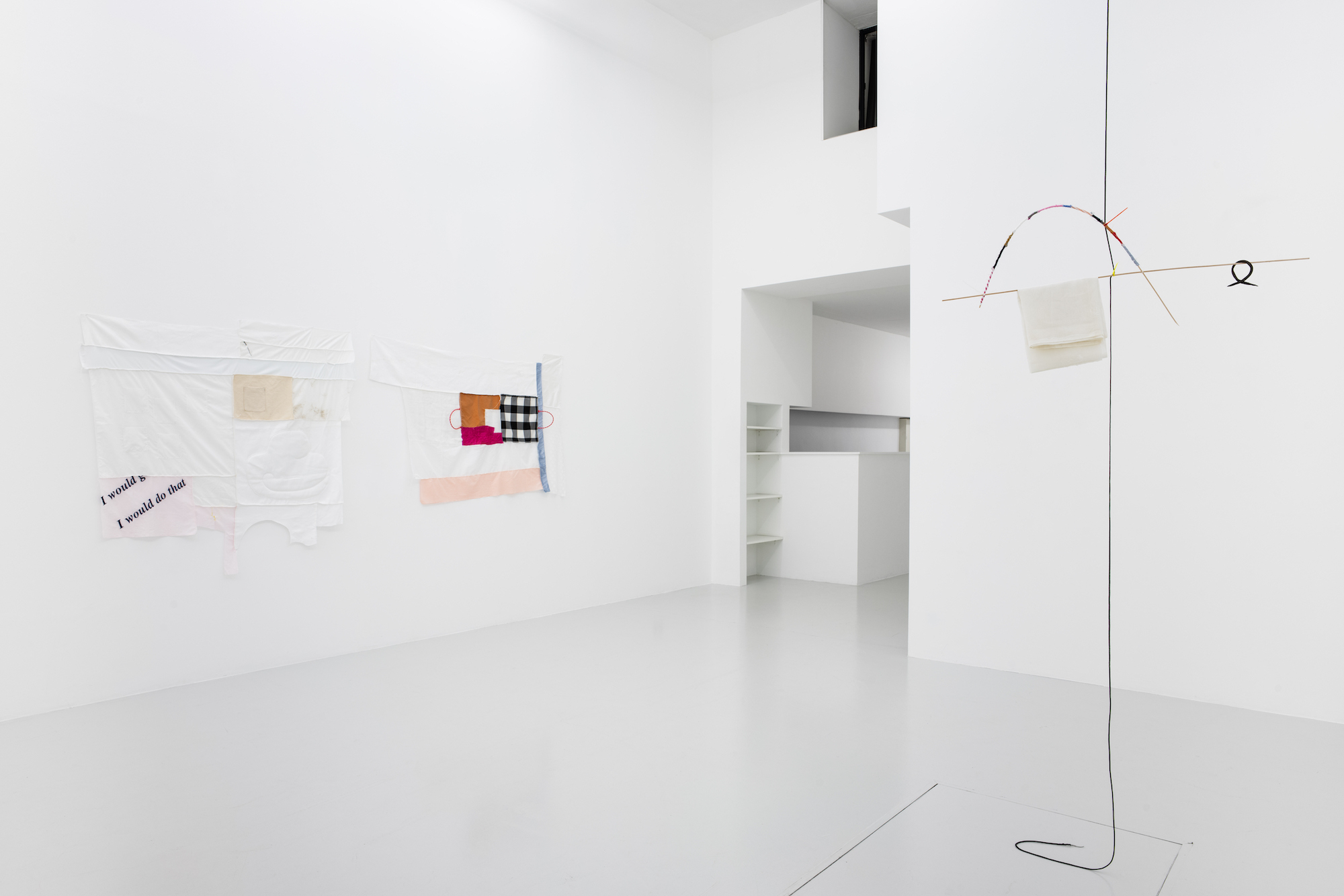
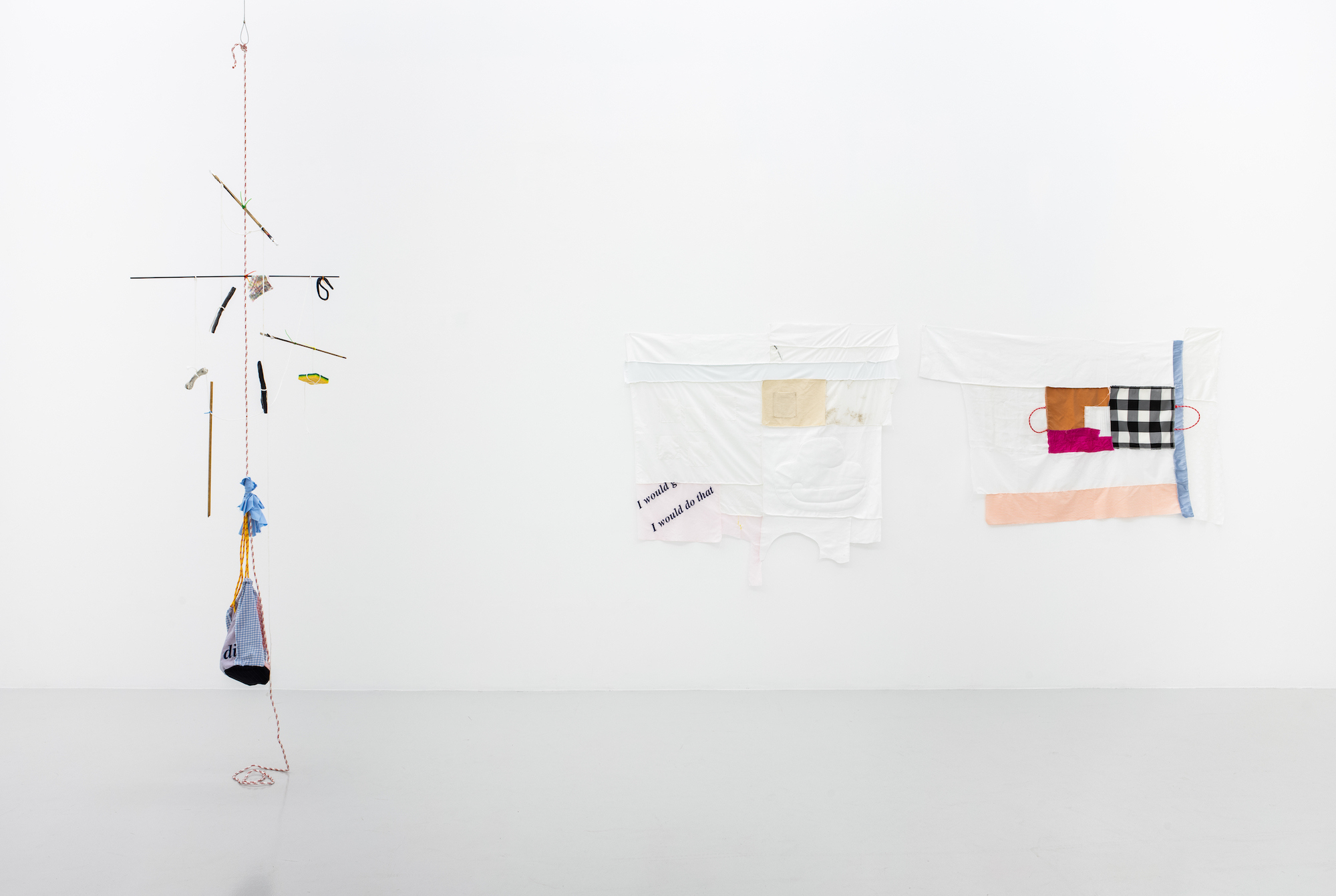
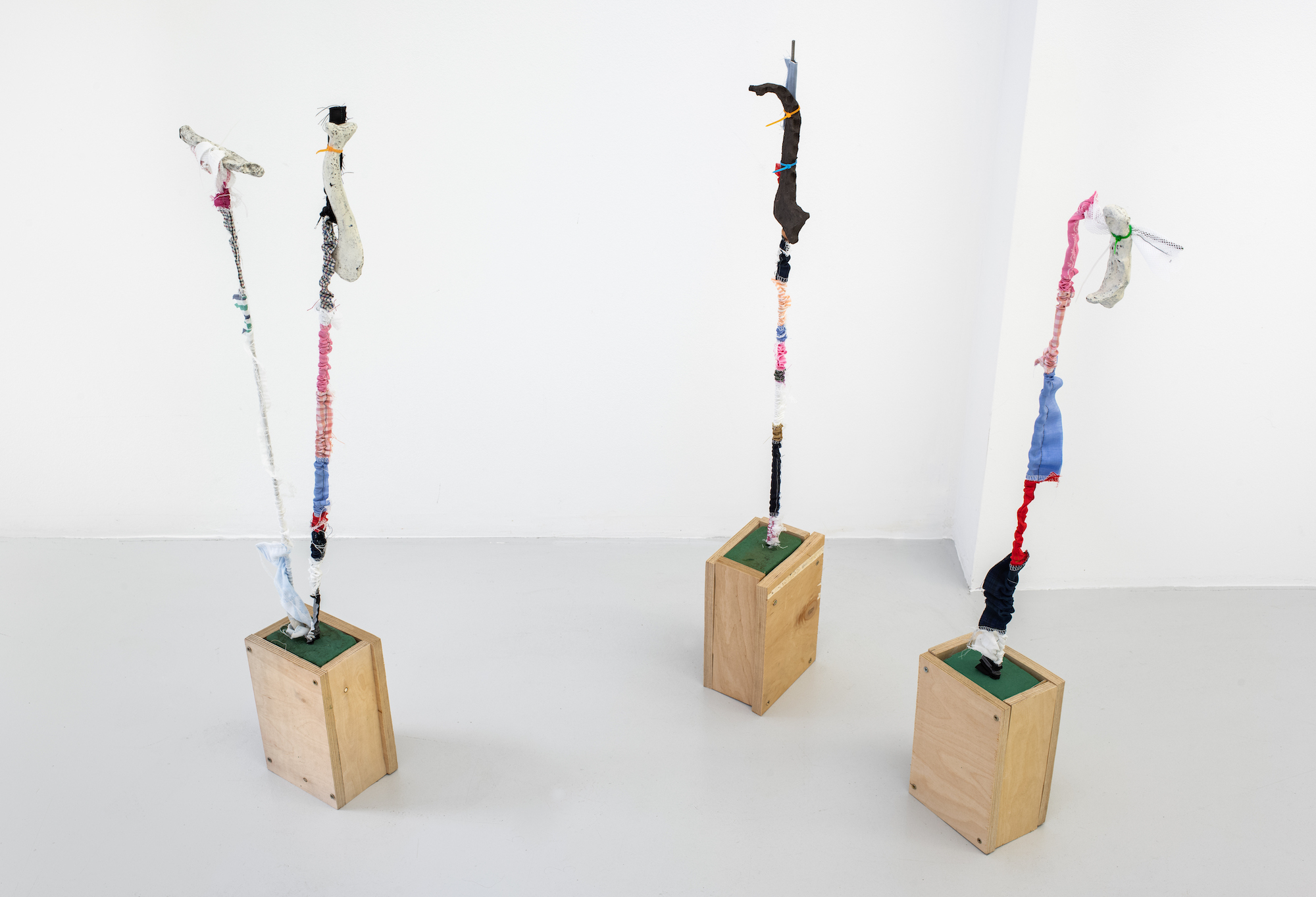
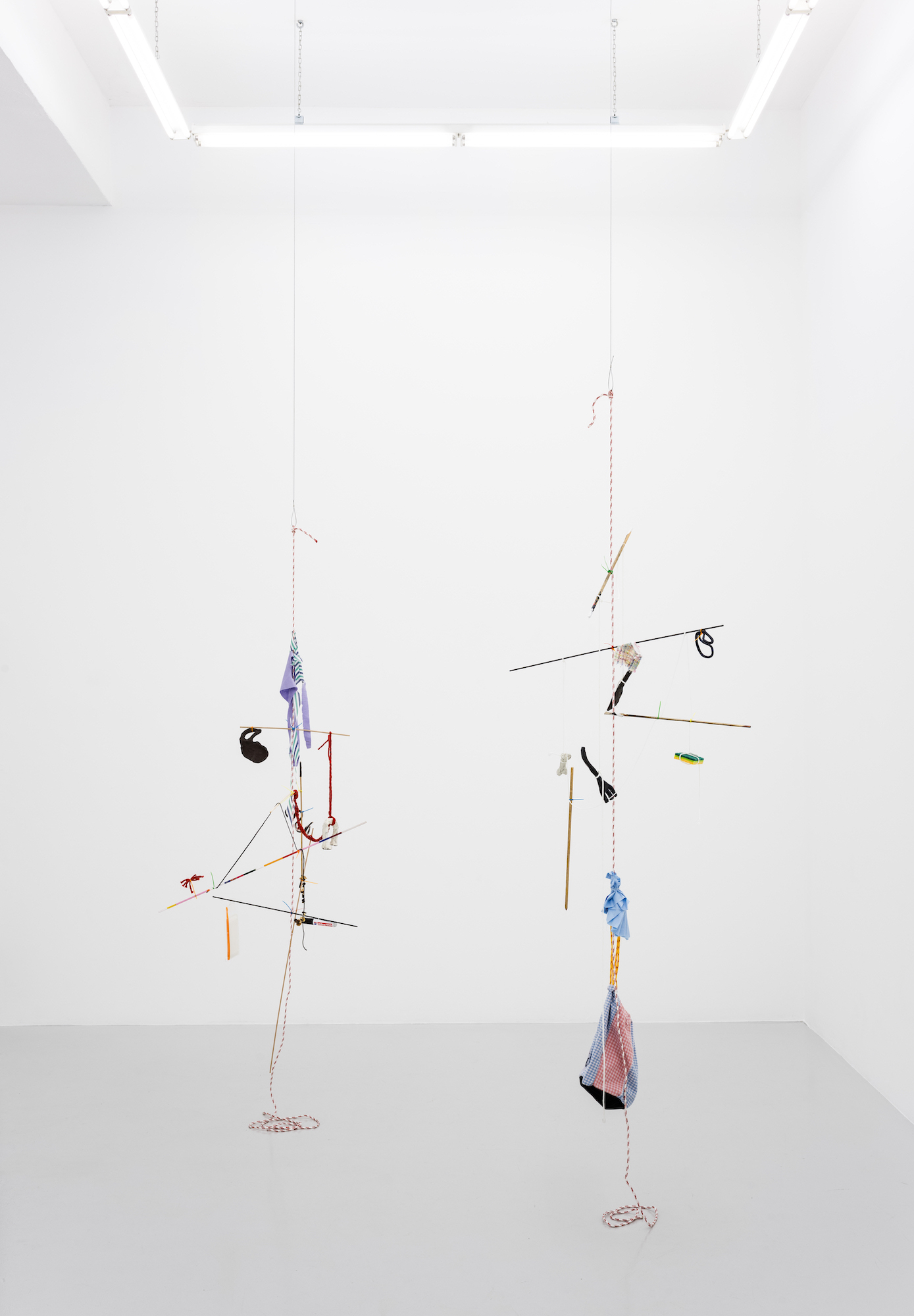
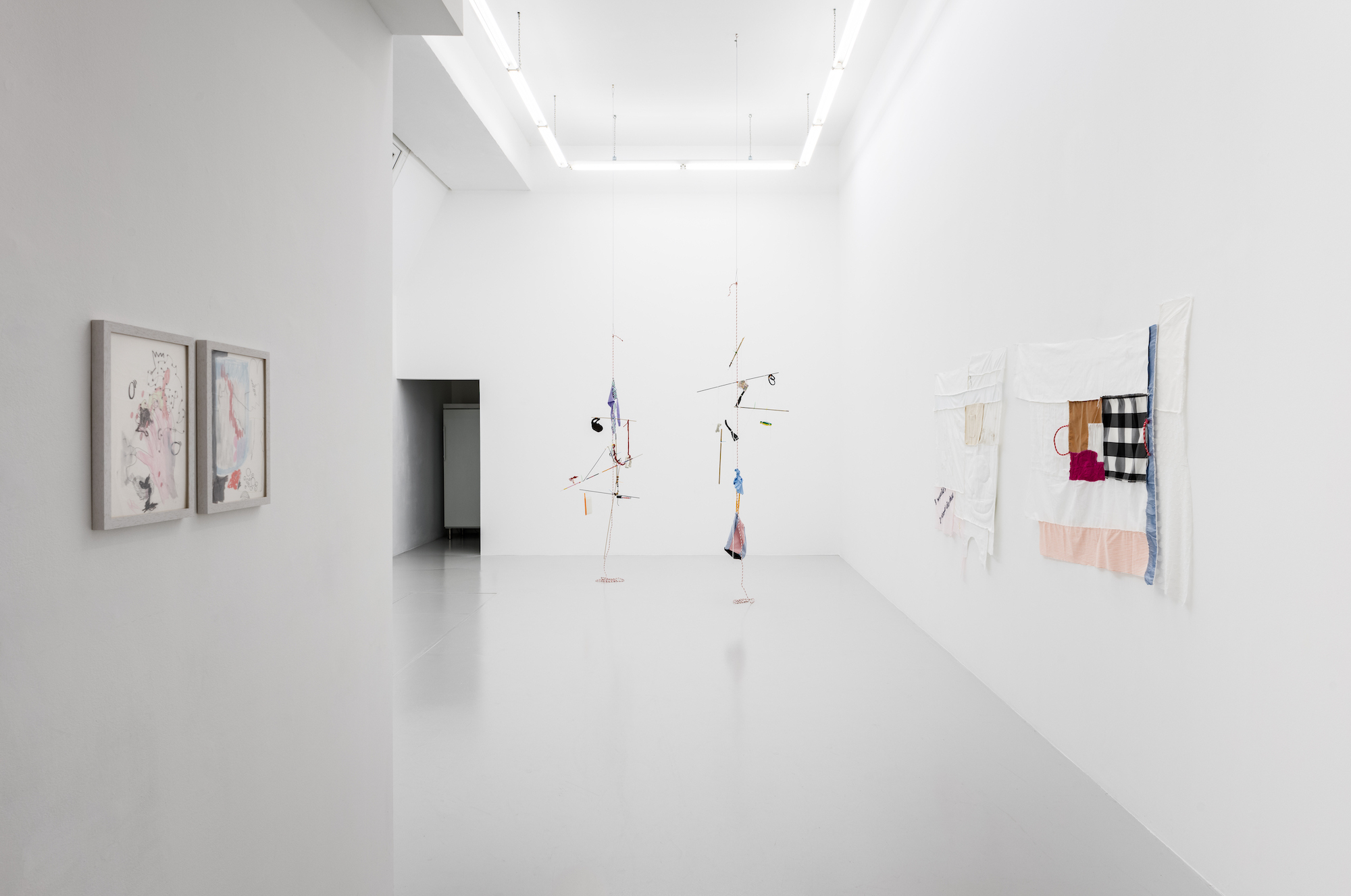
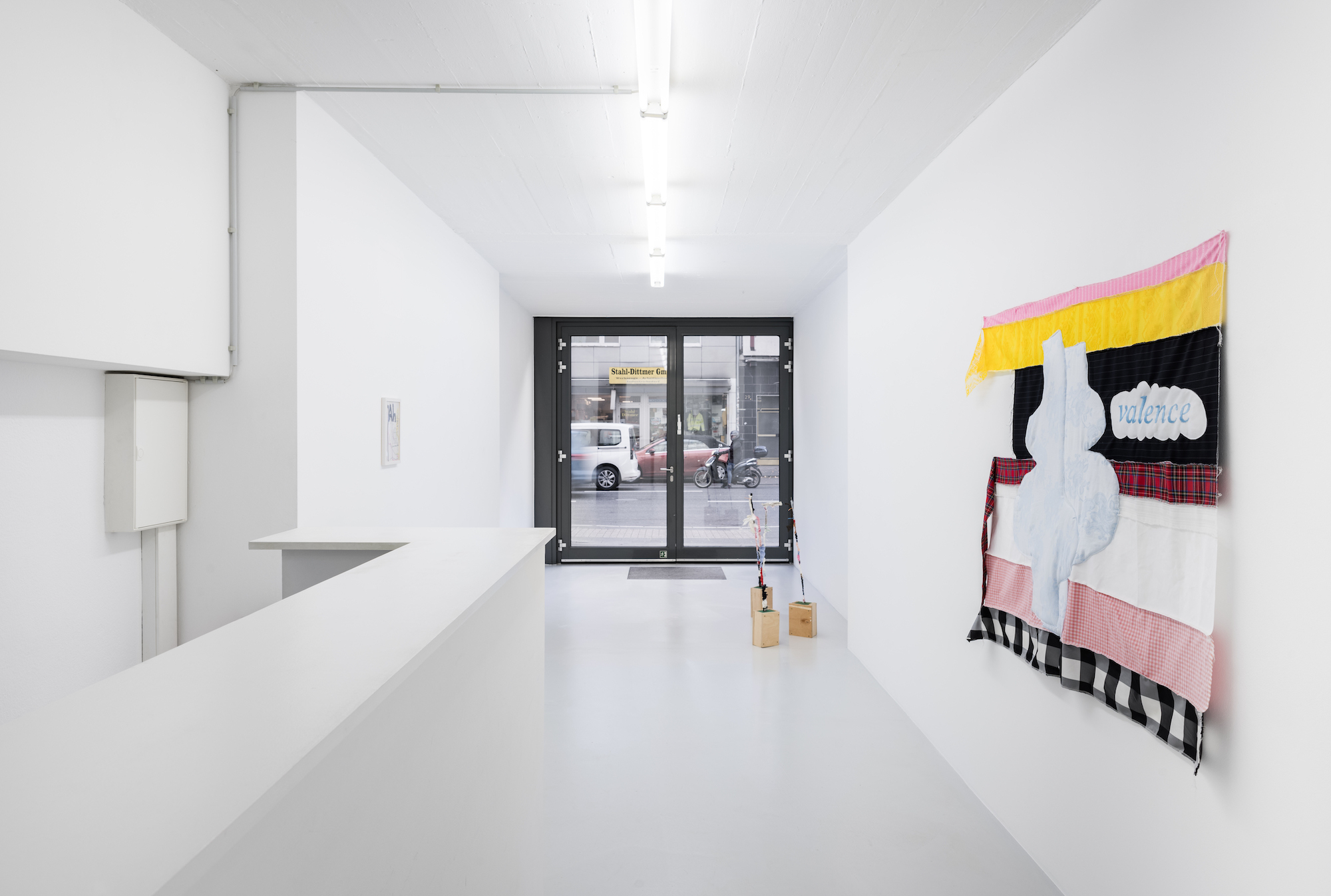
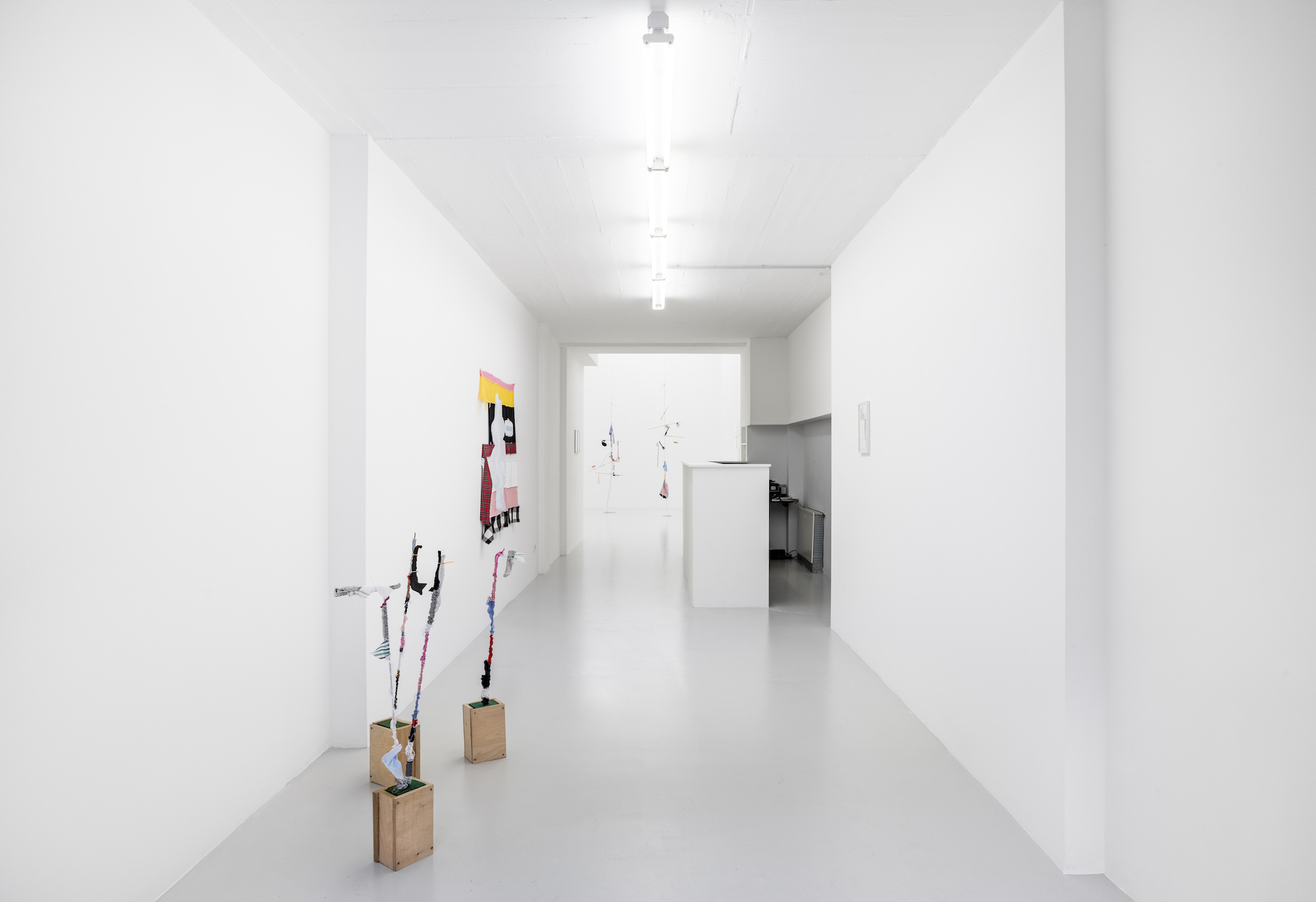
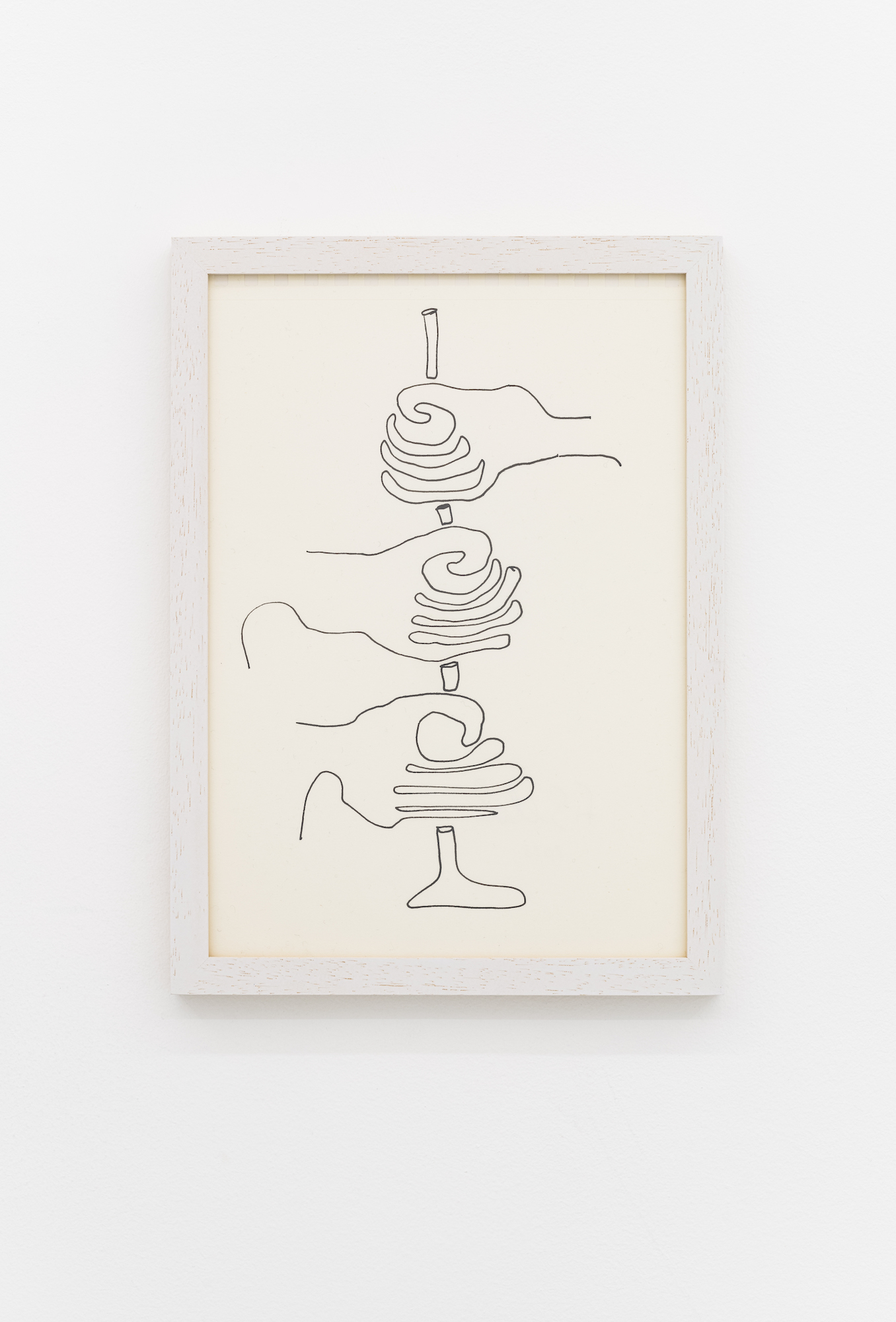
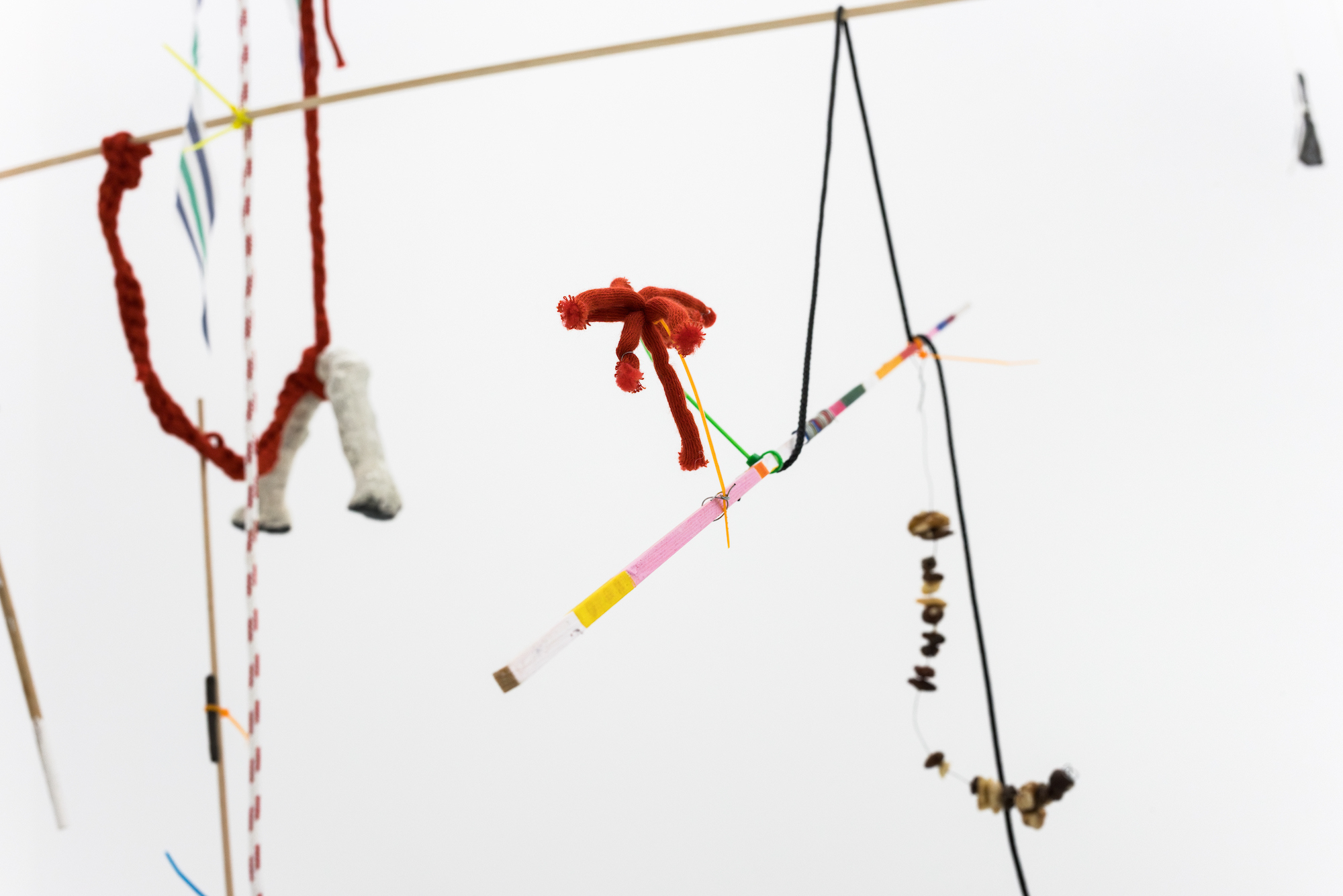

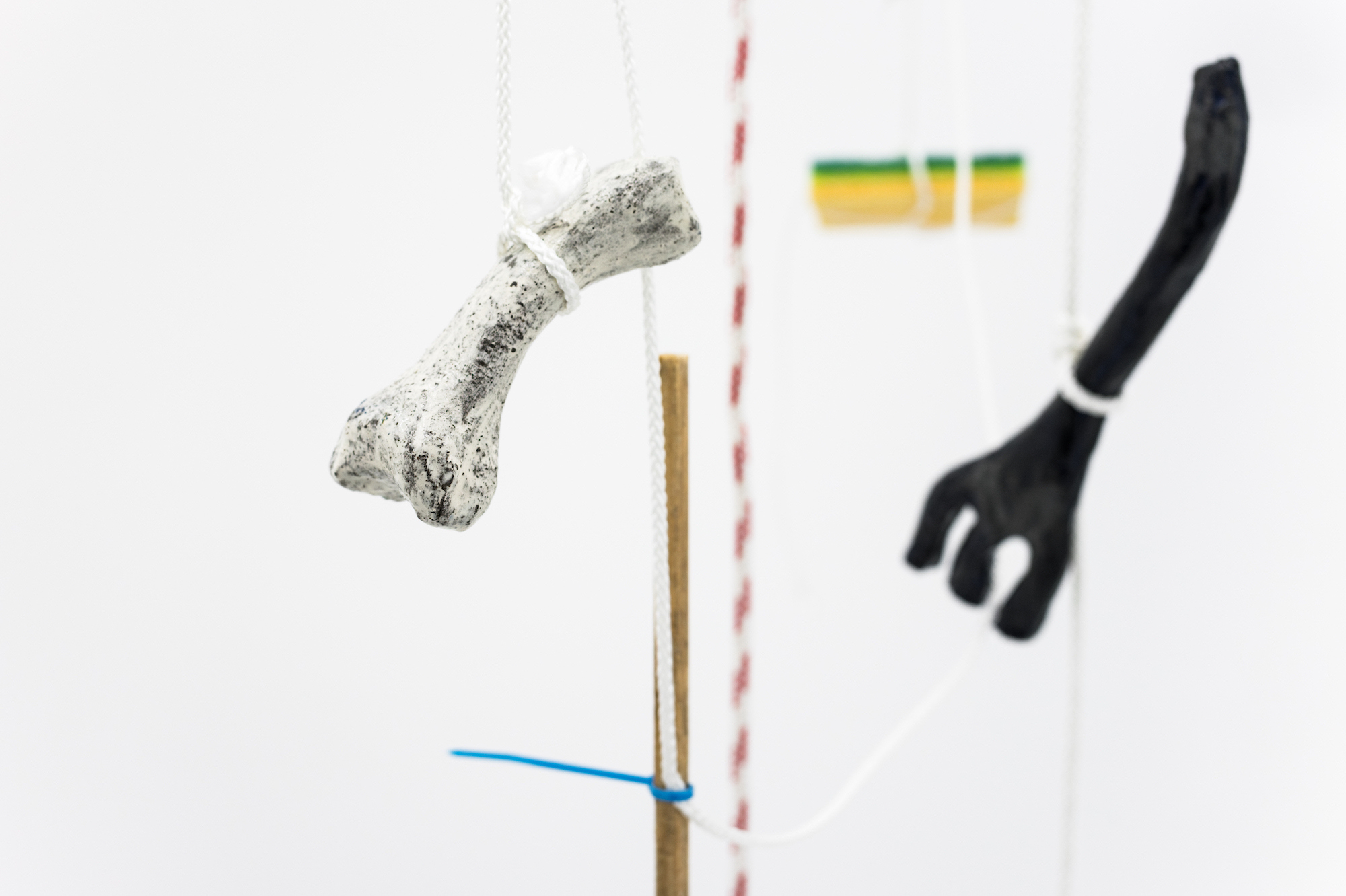
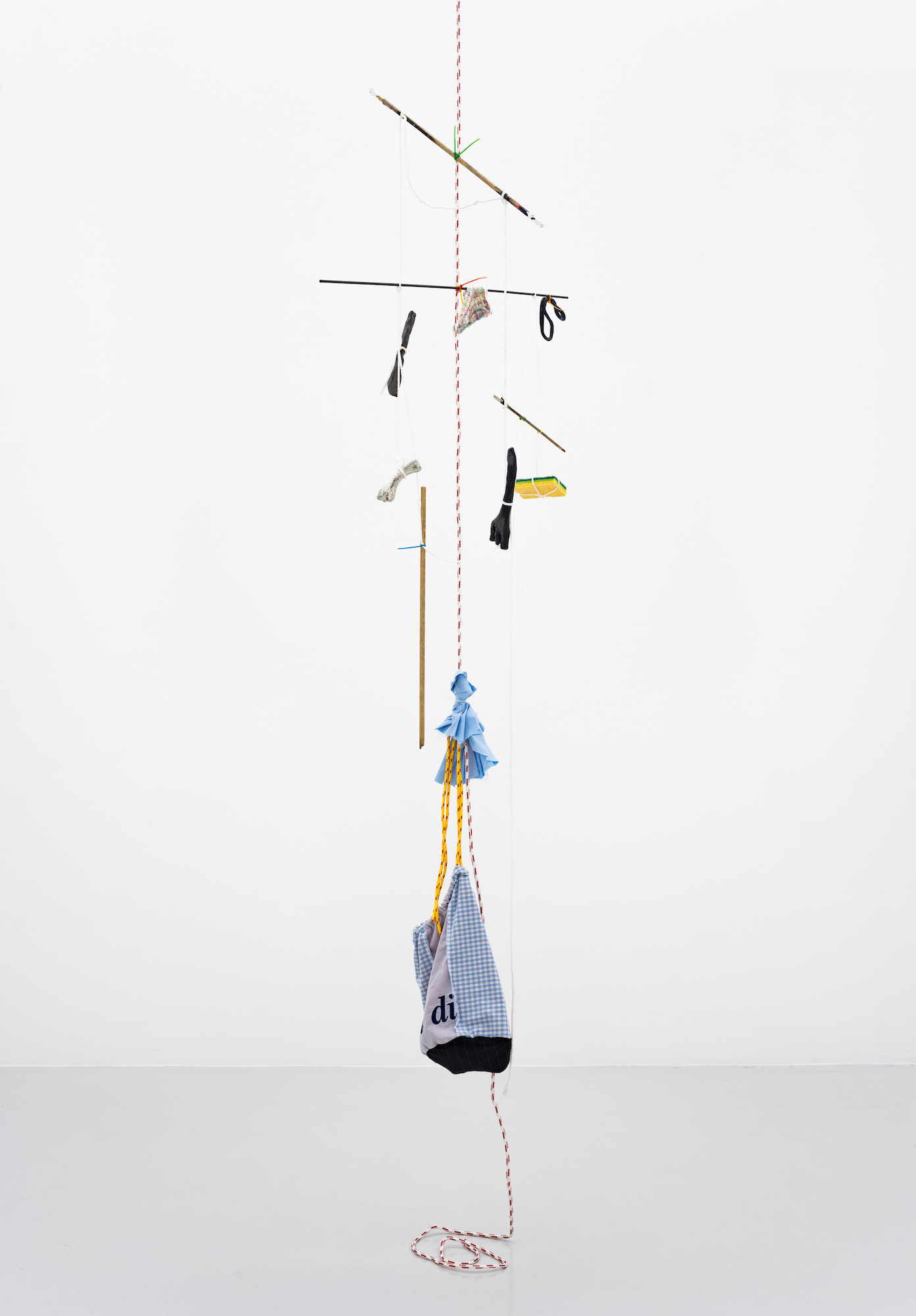
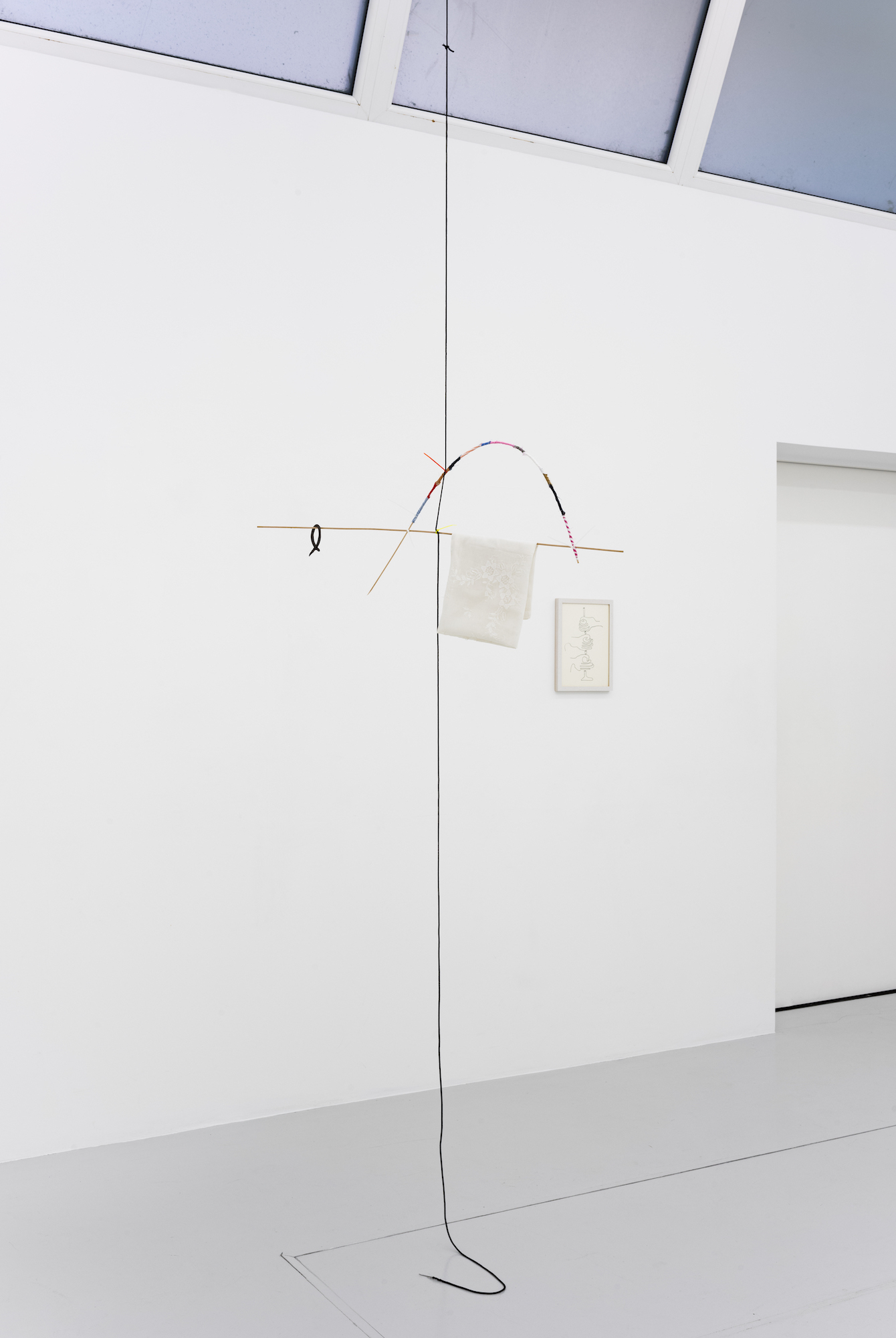
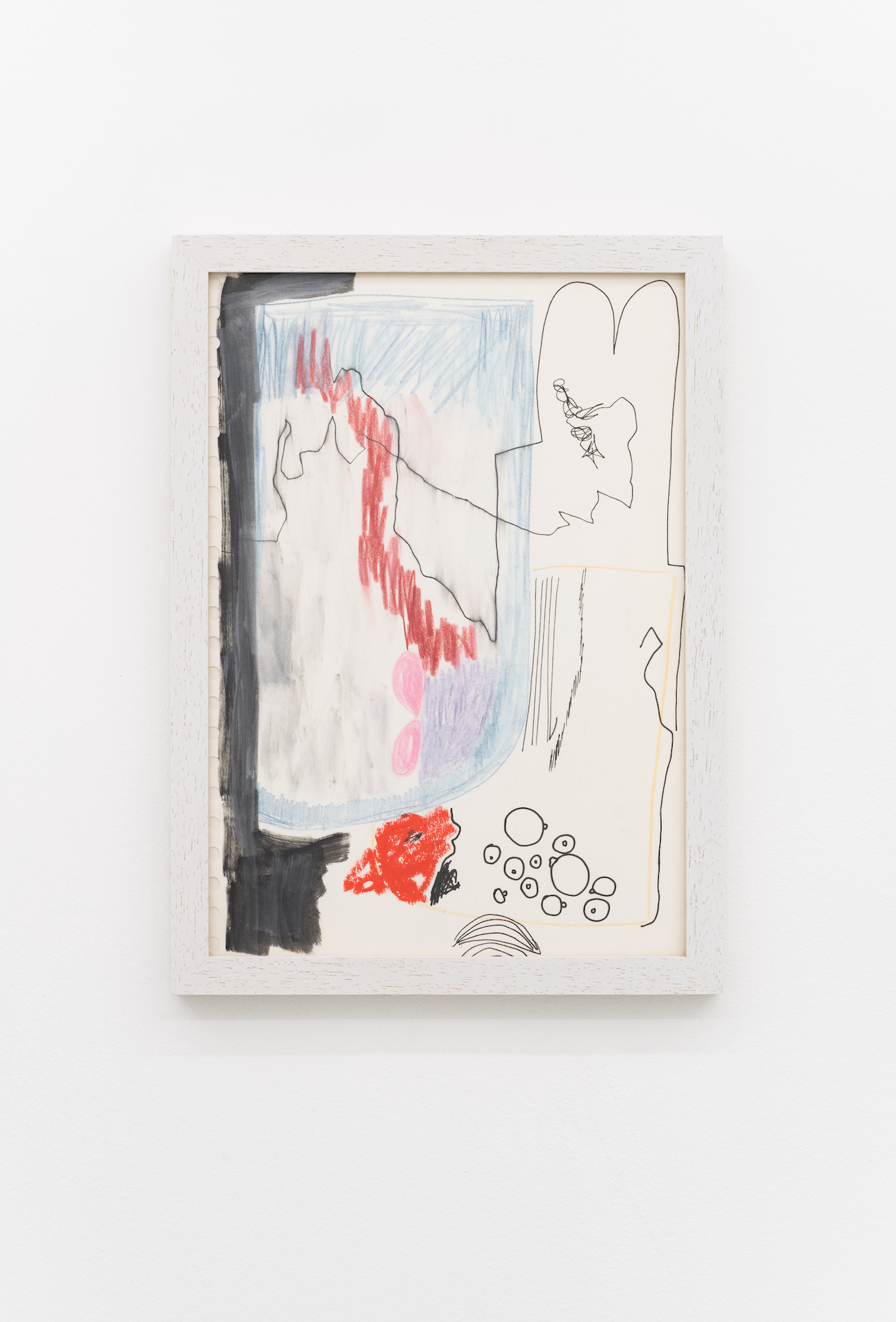
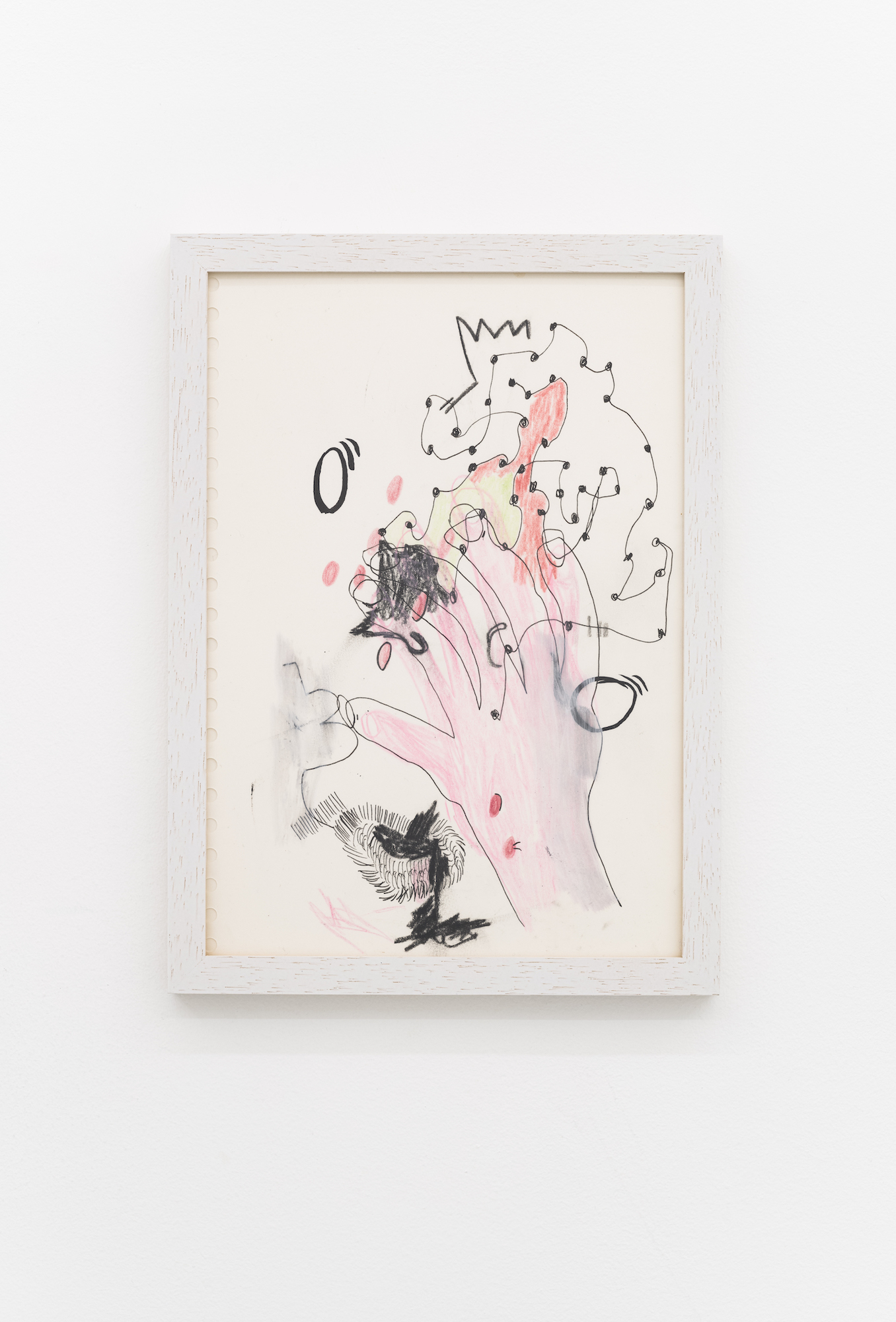
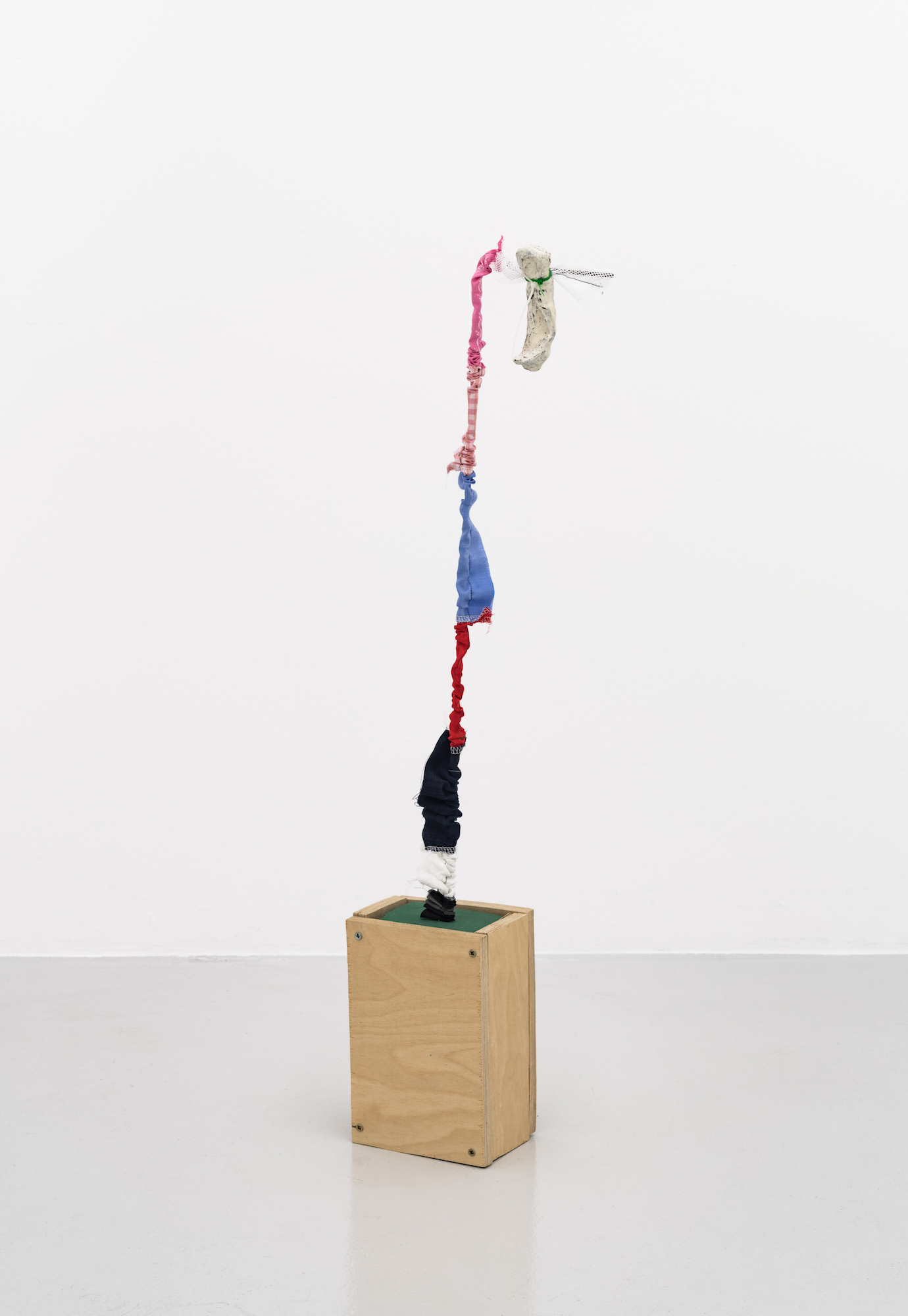
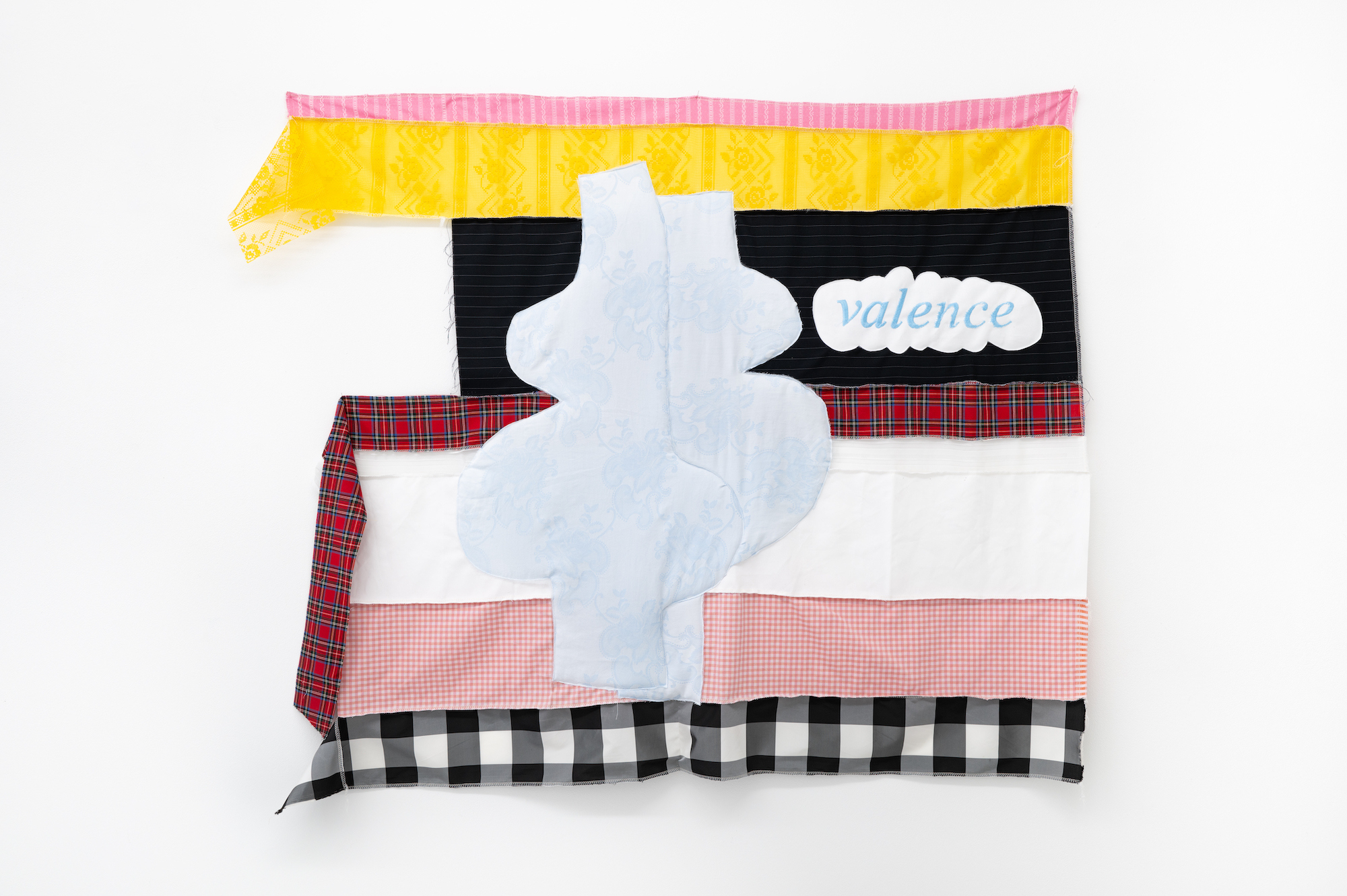
A hip bone, which usually supports the human body, hangs uselessly on a nylon rope. An empty bag, detached from its original function. Domestic objects that surround us every day – a knife and fork, trail mix, a Sharpie, a dish sponge – are held, carried and balanced.
In Franca Scholz’s mobiles, ceramic pieces inspired by the human body are presented in poetic arrangements with everyday objects that simultaneously find a fragile balance and a paradoxical change of purpose. Through their assemblage-like composition, the objects enter into a dialogue, not only with each other, but also with gravity and the viewer. They invite us to reflect on the ambiguity of “holding”: holding out under physical burdens, holding up during emotional crises, holding onto memories or holding friendships together.
Held together by colorful cable ties, steel rods wrapped in fabric and objects on nylon ropes that swing freely in space, hang on the wall or stand firmly on the floor: the works in the exhibition combine to form a humorous visual language that oscillates between absurdity and familiarity. In the wall works, different textiles are compiled together in a collage-like process of separating and joining to form new images. The connecting seams that hold the individual pieces of fabric together are visible.
The ambivalence of states – connected and separated, useful and useless, light and heavy – is taken to the point of absurdity in the exhibition title Did you ever feel like a bag? ??. The bag, defined as a “thing to put things in,”1 appears repeatedly in the works, whether as a motif, in terms of its function, or simply as a handle. It becomes a metaphor for the human body: a vessel that can carry physical burdens as well as gestures of care, emotions, memories and social roles.
“The bag flutters. Its material clings to its contents. It takes on the shape of its contents, its smell,”2 writes the author Enis Maci in her text “What the Bag Is Made Of.” In Franca Scholz’s work, this idea of a flexible, malleable container becomes the symbol of a space of possibility that is open to individual interpretation.
1 Ursula K. Le Guin, “The Carrier Bag Theory of Fiction,” in das neue Alphabet, vol. 6, ed. Sarah Shin and Mathias Zeiske (Leipzig, 2021), pp. 36–45, here p. 39.
2 Enis Maci, “What the Bag Is Made Of,” in das neue Alphabet, vol. 6, ed. Sarah Shin and Mathias Zeiske (Leipzig, 2021), pp. 28–35, here p. 32.
Katrin Rollmann

